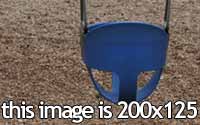
Class Map
The shaded area is the portion of South Central Los Angeles covered by these students. The area was divided into five sections with each class reporting on a different section. Within each section, various "beats" were covered including: arts & culture, business, community development, crime, education, food, health, history, homeless & housing, recreation & leisure, religion, technology, and transportation.
Thumbnail file name should be: lastname-tzr.jpg EX: hernandez-tzr.jpg et semper magna laoreet at. Fusce pulvinar, neque non rutrum accumsan, mi sapien vulputate orci, vel sollicitudin neque lorem non lectus. Nullam justo est, tincidunt in suscipit sit amet, mollis at justo.
Nulla facilisi. Nullam vestibulum condimentum turpis, et semper magna laoreet at. Fusce pulvinar, neque non rutrum accumsan, mi sapien vulputate orci, vel sollicitudin neque lorem non lectus. Nullam justo est, tincidunt in suscipit sit amet, mollis at justo.
Nulla facilisi. Nullam vestibulum condimentum turpis, et semper magna laoreet at. Fusce pulvinar, neque non rutrum accumsan, mi sapien vulputate orci, vel sollicitudin neque lorem non lectus. Nullam justo est, tincidunt in suscipit sit amet, mollis at justo.
Nulla facilisi. Nullam vestibulum condimentum turpis, et semper magna laoreet at. Fusce pulvinar, neque non rutrum accumsan, mi sapien vulputate orci, vel sollicitudin neque lorem non lectus. Nullam justo est, tincidunt in suscipit sit amet, mollis at justo.
Nulla facilisi. Nullam vestibulum condimentum turpis, et semper magna laoreet at. Fusce pulvinar, neque non rutrum accumsan, mi sapien vulputate orci, vel sollicitudin neque lorem non lectus. Nullam justo est, tincidunt in suscipit sit amet, mollis at justo.
By Alli Holt and Nick Berman
With the guidance of three professors, journalism students from the University of Southern California set out to report on a community as part of their online media course. And what better to cover than the area surrounding USC- South Central Los Angeles? An area widely ignored by the media or plagued by reports of crime and gang activity, the students set out to capture the rich history and culture of a community that far too few know about.
“At first I was very intimidated by our area and didn't really know where to start so I just started biking around aimlessly,” said Kristin Yinger, a student in Professor Robert Hernandez’s class. “Luckily, that led me to find some great stories of people doing interesting things worth reporting on.”
A total of five classes worked on the reporting, with each class covering a different area of our map. Within each class, students chose different ‘beats’ to focus their efforts on while developing story ideas. Student Kira Brekke, also in Hernandez’s class, liked being restricted to one beat, saying, “I think it allowed every one of us to get a more in-depth experience of the topic we chose, instead of getting a shallow knowledge of a variety of topics.”
Still, this in-depth experience didn’t come without a few hiccups. Approaching potential subjects proved difficult in the largely Latino community, where many residents only speak Spanish. Even in situations where there was no language barrier, students had to coax subjects into speaking with them. “Many of the residents in
the area didn't trust the media and had a fear of talking if they did,” explained Sean Patrick Lewis, a student in Professor David Medzerian’s class.
Once initial concerns and challenges were addressed, students developed the skills to display their work on a number of mediums. “Throughout this project,” said Camille Massey in Hernandez’s class, “I have learned a variety of technical skills such as how to use various software programs, camera, video, and audio techniques, and a plethora of online, web tools.”
Soon, classes began displaying articles, audio slideshows, maps, and other “webby” elements online using HTML coding. Students stressed that relying on technology and the internet to complete assignments could be challenging, but say that it only better prepares them for their futures in journalism. “Every news piece makes its way to the Internet eventually, and in order to stay relevant we have to keep up. This class provides us with the basis to be journalism all-stars and not just good writers or pretty faces,” said Olivia Heinle, a student in Professor Chris Strimbu’s class.
Despite the difficulty of the work, it quickly became clear to the students that what they were doing was not only enriching to their journalism skills, but exposing them to people, traditions, and surroundings that they will remember long past the course’s final projects. “It’s one thing to read about poverty in a textbook, it’s another to see it with your own eyes,” said Iuna Dones, a student in Hernandez’s class, adding “I fell in love with the homeless people and homeless organizations I interviewed…and I will go back and visit them for as long as I can.”
At the end of the semester, the students each completed one last project- a website featuring a number of elements aimed at capturing a community that many students once feared, but are now proud to be surrounded by here at USC. The result is this website, featuring the people, stories, sounds, and culture of South Central Los Angeles.
“We are giving a voice to a community that is often overlooked,” said Brekke, “and I don’t think there is anything more powerful than that.”



